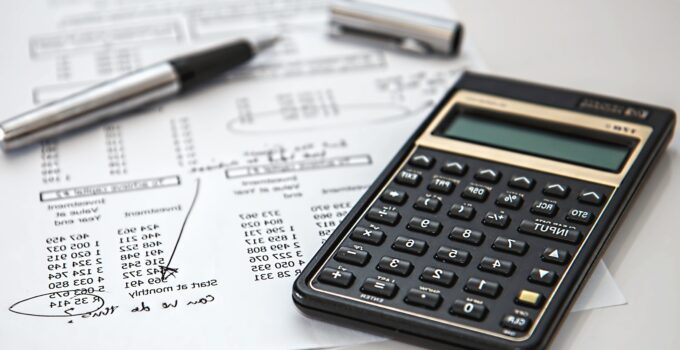If you want to know exactly how much to charge for your product or service, the fastest way is to use our Business Markup Calculator. Just enter your cost price, choose your desired markup percentage, and the calculator instantly shows you the selling price you need to stay profitable. No spreadsheets, no confusing formulas — just clear numbers in seconds.
Business Markup Calculator
What is the markup definition?
Markup is the percentage added to the cost of a product or service to determine its selling price. It reflects how much more you charge beyond the cost of production to ensure profitability. For example: if a product costs $50 to produce and you apply a 50% markup, the selling price becomes $75. This markup covers not only profit but also overhead costs such as labor, packaging, rent, and marketing. Markup is widely used across industries because it provides a straightforward way to scale costs into prices that sustain a business.
How to use our markup calculator
Our calculator is designed to remove the complexity from the math. Simply enter your cost price and desired markup percentage, and the calculator will instantly generate the correct selling price. For example, entering $120 with a 25% markup will return a selling price of $150. This is especially useful when testing different scenarios, such as “what if I raise my markup by 5%?” or “how much can I discount before I lose profit?” Try it now at the top of this page to simplify your pricing strategy.
What is the markup formula?
The markup formula is simple:
Markup (%) = Selling Price – Cost PriceCost Price×100
Breaking this down:
- Cost Price = what it takes to produce or acquire the product
- Selling Price = what you charge customers
- The difference = gross profit
Example: if your cost is $100 and you sell for $150, then markup = (150 – 100) ÷ 100 × 100 = 50%.
How to calculate markup for a business?
To calculate markup:
- Determine the total cost of the product or service (including materials, labor, shipping, and overhead).
- Choose the markup percentage that aligns with your profit goals and industry standards.
- Apply the formula or use our calculator to instantly get the selling price.
Example: If your cost is $200 and you want a 40% markup, selling price = $200 × (1 + 0.40) = $280. This ensures your price reflects both costs and profit targets.
What is the difference between margin and markup?
Though often confused, margin and markup are not the same. Margin is profit as a percentage of selling price, while markup is profit as a percentage of cost. Using the same numbers illustrates the difference clearly:
| Term | Formula | Example (Cost = $100, Selling Price = $150) |
|---|---|---|
| Margin | (Profit ÷ Selling Price) × 100 | 33.3% |
| Markup | (Profit ÷ Cost) × 100 | 50% |
Confusing the two can lead to underpricing or overpricing. A 50% markup does not equal a 50% margin.
What is the average markup for a business?
The average markup varies widely by industry. For example:
- Retail: typically 30–50%
- Restaurants: often 200–300% (due to perishable goods and overhead)
- Fashion and apparel: around 60%
- Electronics: 20–40% depending on competition
- Services: can range from 50–200% depending on expertise and demand
These figures serve as benchmarks, but every business should tailor its markup strategy based on market positioning, brand value, and competition.
Markup in price management
Markup is more than just a math problem — it’s a strategic pricing tool. A well-managed markup ensures that prices cover costs while remaining competitive. Businesses must balance markup with demand, perceived value, and competitor pricing. For example, luxury brands may use higher markups to reflect exclusivity, while commodity businesses rely on lower markups and higher volume. Managing markup effectively allows businesses to remain profitable in dynamic markets.
Markup by specific industries
Different industries apply markup in unique ways:
- Retail: Clothing and household goods typically run on a 30–50% markup.
- Food & Beverage: Restaurants may use 200–300% markups to cover staff, rent, and spoilage.
- Services: Freelancers and consultants often apply 50–200% markup based on expertise and project scope.
- E-commerce: Dropshipping and print-on-demand businesses typically run lower markups (20–40%) but rely on higher volume.
Knowing industry norms helps you price competitively while protecting profitability.
Common mistakes when setting markup
Many businesses miscalculate markup by:
- Confusing markup with margin
- Ignoring hidden costs such as shipping, taxes, or returns
- Applying the same markup to every product instead of adjusting per category
- Blindly following “average” markup without considering unique brand value or positioning
Avoiding these mistakes ensures your pricing strategy aligns with both profitability and competitiveness.
Why markup matters for business growth
Markup directly impacts profitability, scalability, and customer perception. A business that underprices may attract customers but struggle to reinvest in growth. A business that prices too high may see reduced sales volume. Finding the right balance — and using tools like our calculator to test scenarios — helps create sustainable growth.

Jordan Ellis is a business writer and digital strategist at Hustle Framework, focused on practical tools and actionable insights for entrepreneurs. Passionate about helping you make smarter business decisions.


